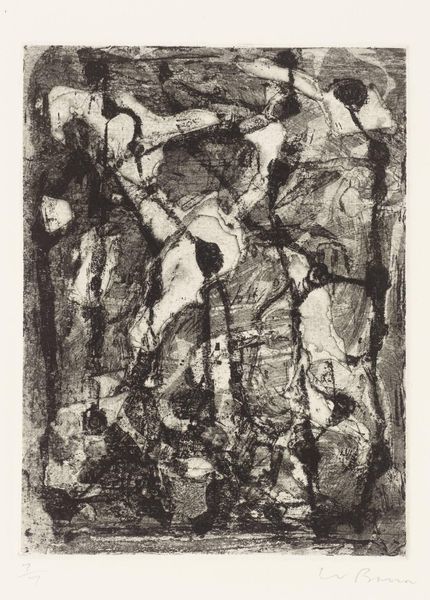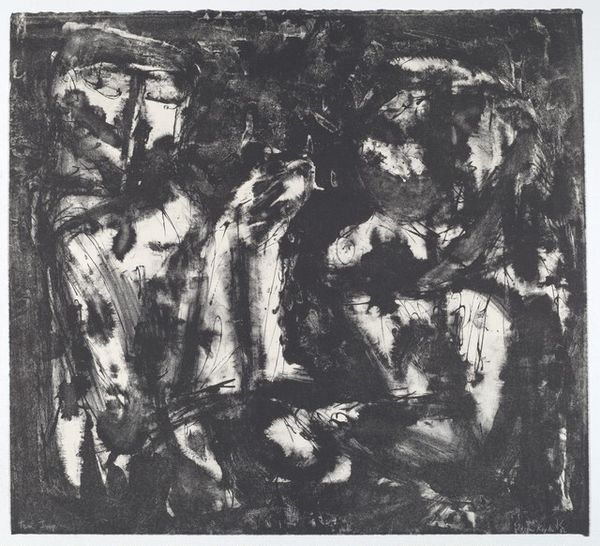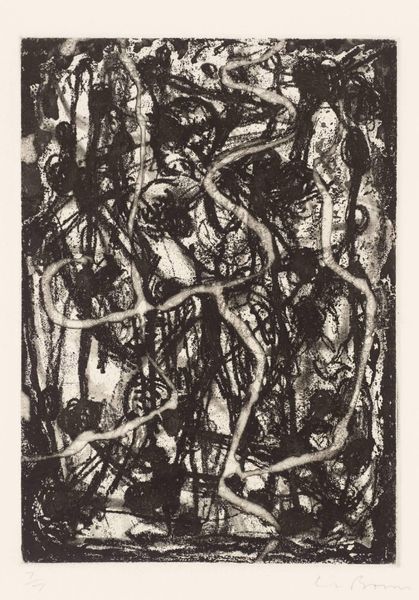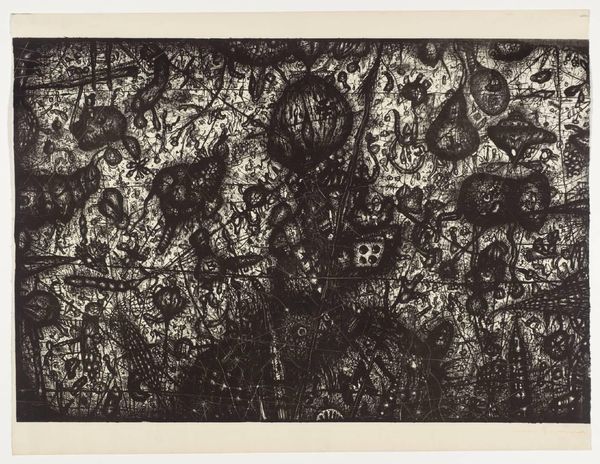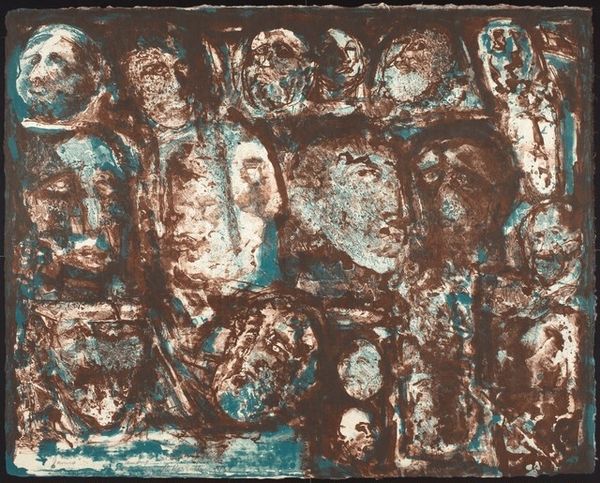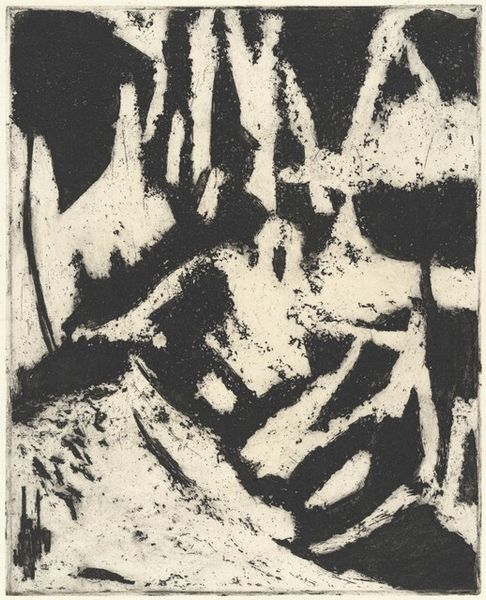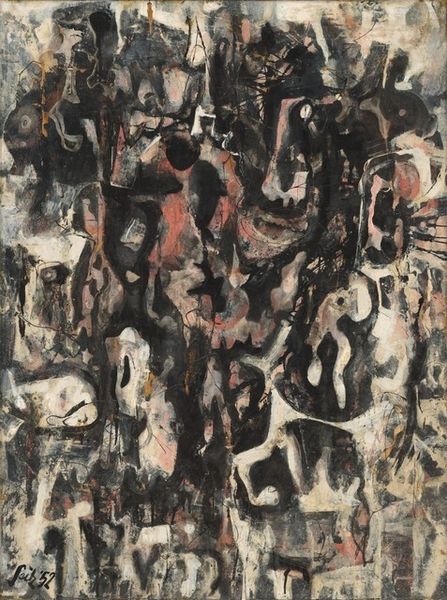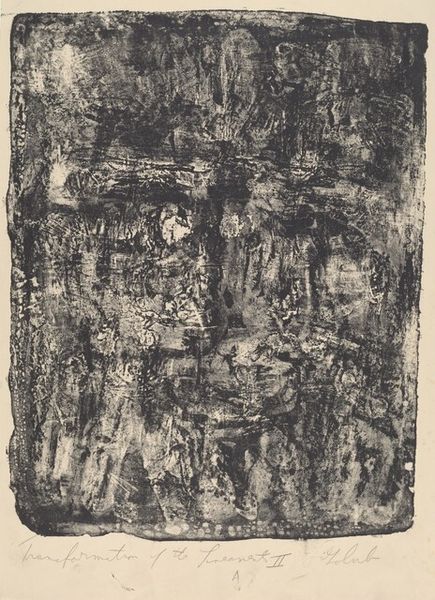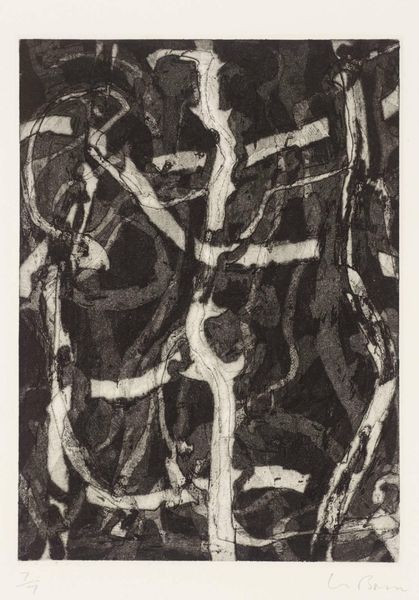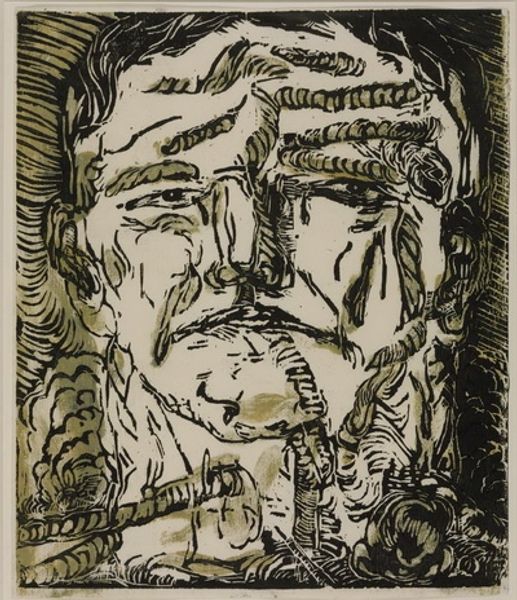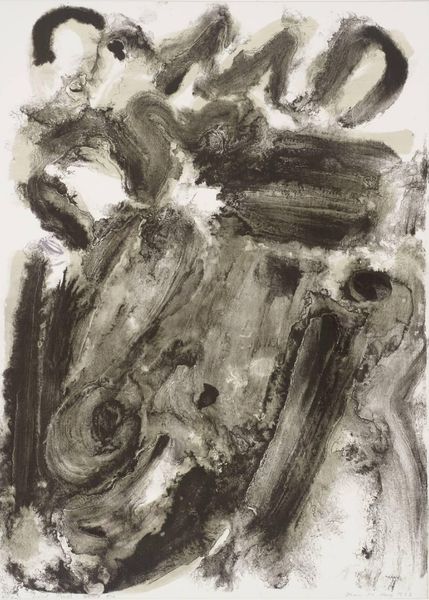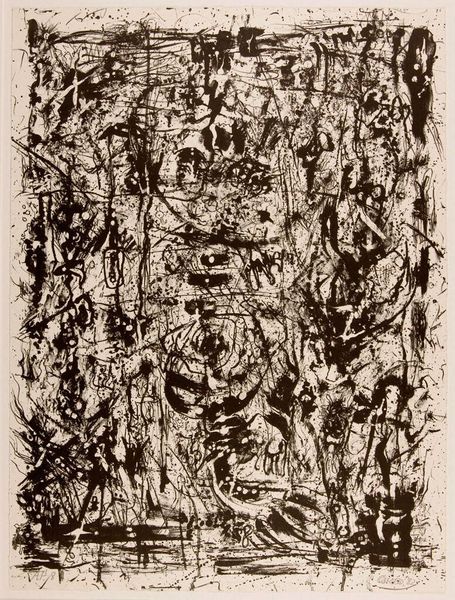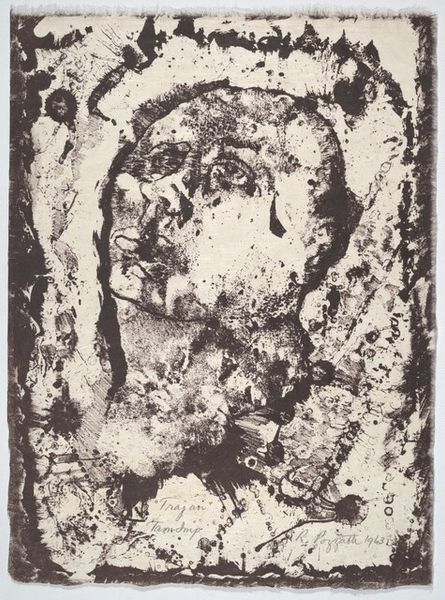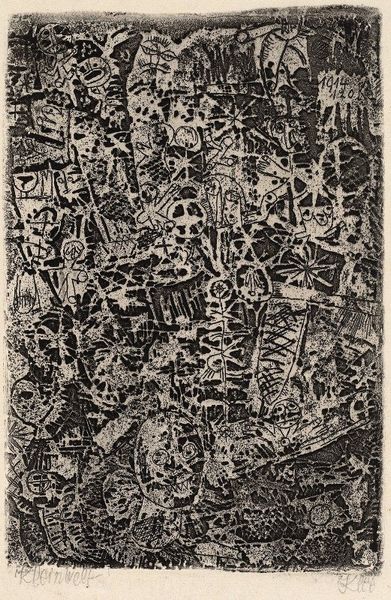
#
portrait
#
abstract-expressionism
#
abstract expressionism
# print
#
figuration
Copyright: National Gallery of Art: CC0 1.0
Curator: Rudy Pozzatti's 1963 print, "Portraits on Stone II," presents us with a densely packed field of faces, or rather, impressions of faces. The earthy tones are so rich. What's your take on this collective portrait, so to speak? Editor: Initially, I find it haunting. A sort of palimpsest of forgotten visages. These aren't individual portraits in the traditional sense, more like collective memories eroded over time. The title itself suggests the lasting, almost geological, weight of these identities etched onto stone. Curator: Yes, I completely agree with that read. And I love how the ambiguity enhances the emotive impact of those symbols. It really does echo a time capsule, unearthed in our moment, and I think we still understand something, even in this abstracted, incomplete way, about human nature, and how society holds memories. Pozzatti captured the fragility, too. It could also remind you of a child, and how children will make a game of drawing faces very quickly over and over. The faces almost seem to float freely within their roughly circular frames... don't they? Editor: Indeed. Those circular frames, or the *suggestion* of them, evoke ancient coins or medallions, reinforcing the theme of remembrance. We imprint value – literally monetary, or of significance, honor - and I keep wanting to touch them. To see if they really could be impressions on old bronze coins. Curator: And, there's such freedom here in Pozzatti’s abstraction, yet the work remains undeniably figurative. Even in the areas where facial features blur, an expression is suggested. Are these real people Pozzatti knew, I wonder, or purely invented faces from memory, or from art history? Do we know anything more about Pozzatti's source material or method? It makes me ponder. Editor: My research points to a fascinating synthesis. Pozzatti's family heritage as monument makers led to experimentation with intaglio, combined with lithography that brought together Renaissance portraiture along with experimental image transfers and collages. This all adds depth to the cultural well he's drawing from, wouldn’t you agree? It's history literally layered upon history, physically made so via the print medium itself. Curator: Precisely! Layers – of history, identity, memory... Perhaps the "stone" isn't just a physical material, but a metaphorical one—the bedrock of shared experience. In some lights I feel that it carries its subjects out from oblivion, almost desperately. Thanks so much. Editor: Yes. I think reflecting on art history is helpful: seeing our present moment as one among a series.
Comments
No comments
Be the first to comment and join the conversation on the ultimate creative platform.
